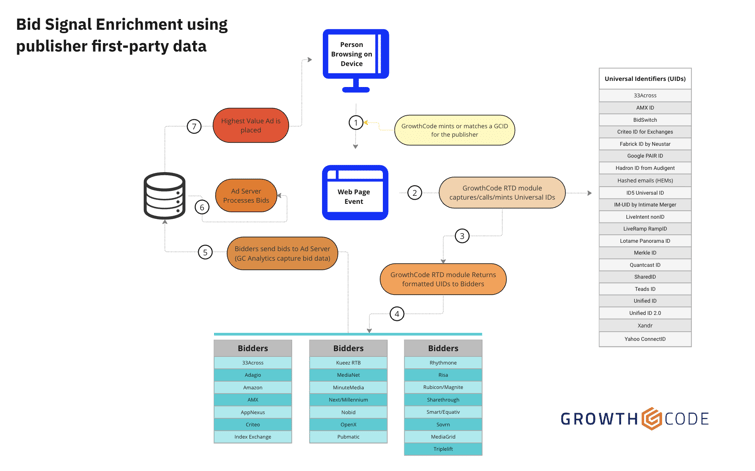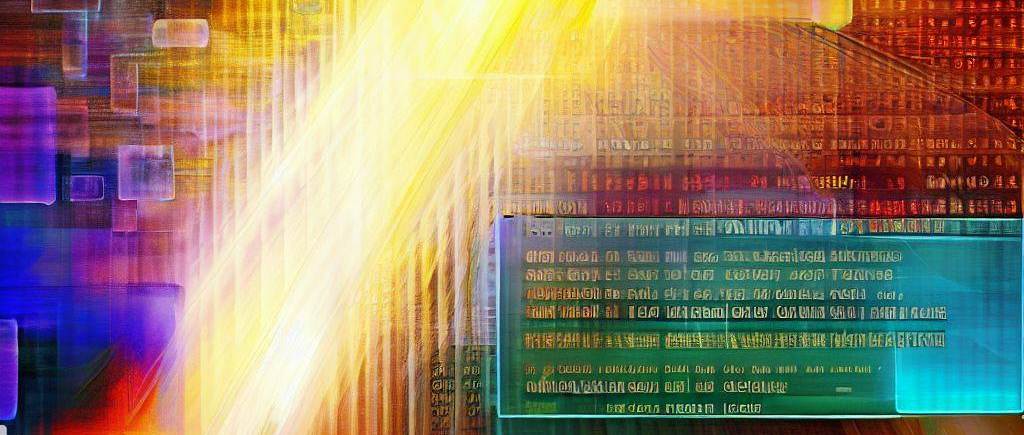Bid Signal Enrichment in adtech: Part 2
Part 2: The Value of Bid Enrichment
(read Part 1)
Challenges for Publishers and Technology Partners
- Data is called from UID provider, but not filled.
- Data is filled, but not sent to some or all demand partners
- Demand partner only accepts a limited number of IDs, so the order transmitted become important
- Data is sent in the incorrect format (each demand partner may read the included data object with different parameters, if any parameter is incorrect, the bid will NOT be decorated).
- Data is sent to SSP but not forwarded to DSP

The Value of Bid Enrichment
The actual value of bid enrichment lies not only in transmitting additional user information but also in increasing data density by offering any information potential buyers might require. As such, maximizing the number of IDs and signals to cater to multiple demand partners is becoming increasingly vital for publishers and technology providers. The monetary value of bid enrichment varies significantly; a recent case study reported: “that by leveraging an ID, UK publishers can expect to increase average win CPM by up to 406%, increase bid density by up to 1091% and decrease the percentage of no bids by up to -17%.” However, our experience is much more modest.
Publishers working with GrowthCode can manage an A/B test of impression, including or excluding bid enrichment using our Prebid modules for RTD and Analytics (links) We see publishers 7%~15% uplift in eCPMs for programmatic impressions. The variation is dependent on site traffic but more closely linked to tuning the bid enrichment process for each demand partner.
Its worth mentioning that while other vendors are offering black-box bid decoration services in, they do so without transparency (link) and take 50% of all uplift they deliver. With GrowthCode’s publisher-friendly infrastructure model, publishers keep 100% of the uplift and simultaneously build their own first party ID asset that can be used for other monetization activities (Link)
Bridging, Stuffing, and Other Important Clarifications
While bid enrichment offers notable advantages, it raises new challenges and complexities. Below is an outline to help all stakeholders understand key terminology and techniques involved in the process:
ID Bridging
- Goal: A legitimate attempt to connect users across devices or browsers using probabilistic matching based on the publisher's first-party data.
- Focus: Delivering a privacy-compliant method for publishers and advertisers to maintain addressability without relying on third-party cookies.
- Intended Outcome: Enhanced ad targeting accuracy and improved user experience through relevant ads, leading to increased CPMs due to better targeting.
ID Stuffing
- Goal: A malicious attempt to inflate the perceived value of ad inventory by injecting bid requests with IDs that don't represent the actual user on the page.
- Focus: Deceiving buyers to secure higher ad rates.
- Outcome: Wasted ad spend for advertisers, inaccurate campaign data, and erosion of trust in publisher inventory and the broader advertising ecosystem.
Challenges in Distinguishing Between Bridging and Stuffing
As the landscape evolves with numerous Universal IDs (UIDs) and Extended IDs (EIDs) replacing third-party cookies, distinguishing between legitimate ID Bridging and malicious ID Stuffing has become increasingly difficult for publishers. Here's why:
- Complex Ecosystem: Publishers rely on ID providers and data companies to supply critical components for ad targeting and monetization. The multitude of IDs and the intricacies of data handling make it challenging to monitor every aspect.
- Transparency Issues: Without full transparency from vendors about how data is used, publishers may inadvertently participate in practices that could harm their reputation or violate regulations.
- Intermediary Reliance: Supply-Side Platforms (SSPs) and Demand-Side Platforms (DSPs) are also dependent on publishers, ID providers, and other intermediaries. This interconnectedness means that one party's actions can significantly impact others.
Recommendations for Publishers
To navigate these challenges, publishers should take proactive steps:
- Demand Transparency from Vendors: Ask providers to clearly explain what data is used and how it's utilized. If their explanations are vague or don't make sense, it may be wise to reconsider the partnership.
- Perform Due Diligence: Regularly audit and assess your vendors and partners to ensure they adhere to industry standards and ethical practices.
- Stay Informed: Keep up-to-date with industry developments, regulatory changes, and best practices to make informed decisions.
- Collaborate with Industry Bodies: Engage with industry organizations that promote transparency and set guidelines for acceptable practices.
Conclusion
Bid enrichment has become a critical tool for maximizing ad revenue and improving targeting in today’s evolving adtech landscape. As the industry moves away from third-party cookies and embraces first-party data and Universal IDs (UIDs), publishers stand to gain significantly from bid enrichment strategies. However, they must also navigate challenges such as data accuracy, transparency, and potential issues like ID stuffing.
For publishers, ensuring proper bid enrichment means working closely with technology partners to optimize signal building and delivery, embrace transparency, and carefully manage the use of Universal IDs. By doing so, they can increase CPMs, improve addressability, and build a sustainable monetization strategy that aligns with the shifting landscape of digital advertising.
At the same time, understanding the risks associated with malicious practices like ID stuffing and taking proactive steps to mitigate them is essential for maintaining trust and long-term success in the ecosystem. Publishers who invest in transparency, demand accountability from their vendors, and stay informed about industry best practices will be well-positioned to thrive in the post-cookie era.








